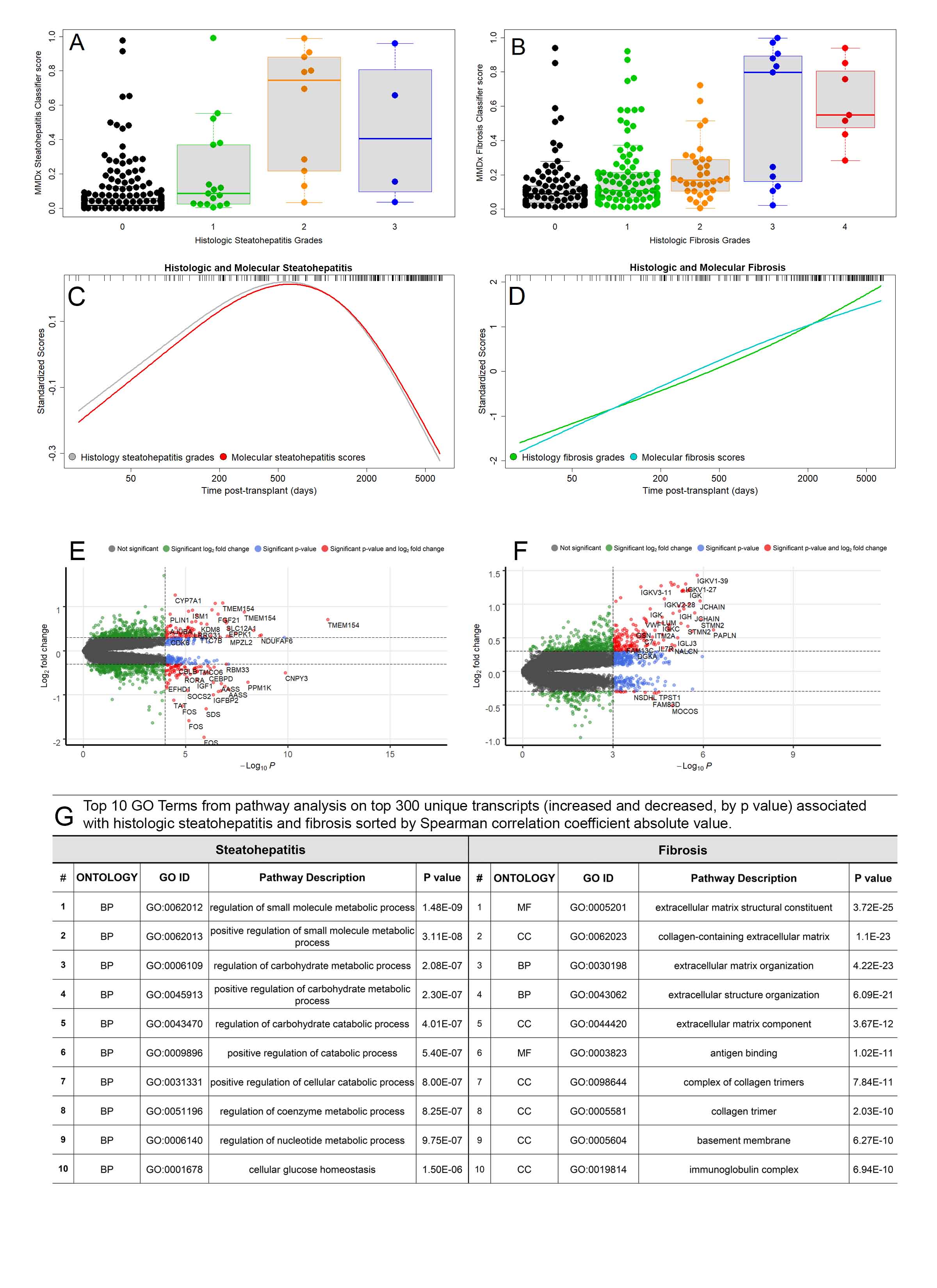Molecular Assessment of Fibrosis and Steatohepatitis in the INTERLIVER Study
1Alberta Transplant Applied Genomics Centre, Edmonton, AB, Canada, 2., ., AB, Canada
Meeting: 2021 American Transplant Congress
Abstract number: 337
Keywords: Fibrosis, Gene expression, Inflammation, Liver transplantation
Topic: Clinical Science » Liver » Liver: Immunosuppression and Rejection
Session Information
Session Name: Post Liver Transplant Management and Complications
Session Type: Rapid Fire Oral Abstract
Date: Tuesday, June 8, 2021
Session Time: 4:30pm-5:30pm
 Presentation Time: 4:45pm-4:50pm
Presentation Time: 4:45pm-4:50pm
Location: Virtual
*Purpose: We previously reported a molecular system for assessing rejection in liver transplants and recently expanded this system to assess injury. Fibrosis is associated with worse long-term liver graft and patient survival, while steatohepatitis is a leading cause for liver transplantation and frequently recurs post-transplant. We examined the molecular changes associated with these conditions.
*Methods: We used gene expression microarrays to study 337 liver transplant indication biopsies from 13 international centers with standard-of-care (SOC) clinical and histologic data. Molecular classifiers were trained on binary histology-based classes (fibrosis grades <=1 vs >1, steatohepatitis grades 0 vs >0); scores were represented by the median of an ensemble of machine learning estimates. Top transcripts for pathway analysis and volcano plots used the same class comparisons. Splines assessed relationships to time post-transplant. Statistical analyses were done in R.
*Results: Steatohepatitis was predicted by a classifier trained on histologic steatohepatitis (AUC=0.83). Fibrosis was predicted by a classifier trained on histologic fibrosis (AUC=0.74). Classifier scores increased with histologic grades (Figure 1A-B). Steatohepatitis grades/scores peaked 2-5 years post-transplant; fibrosis grades/scores increased linearly over time as visualized in splines (Figure 1C-D).
Volcano plots visualized transcripts associated with histologic fibrosis and steatohepatitis. Top transcripts increased and decreased in expression in steatohepatitis biopsies were associated with metabolism e.g. TMEM154 (Figure 1E). In fibrosis, immunoglobulin transcripts were increased e.g. IGK, as were transcripts previously associated with hepatic fibrosis in native livers e.g. stathmin2/STMN2, sodium leak channel/NALCN, papilin/PAPLN (Figure 1F). Pathway terms showed metabolic dysregulation in steatohepatitis, and immune cell activity and matrix structure in fibrosis (Figure 1G).
Though DSA testing was limited, we found no significant relationship between DSA and fibrosis.
*Conclusions: Molecular fibrosis was present in 45% of biopsies, and increased over time. Molecular steatohepatitis affected 55% of biopsies, peaking 2-5 years post-transplant before declining. We found no significant relationship between DSA and hepatic fibrosis in this population. Quantitative scores for steatohepatitis and fibrosis from molecular classifiers provide objective measurements with potential to guide management while offering mechanistic insights.
To cite this abstract in AMA style:
Madill-Thomsen KS, Halloran PF. Molecular Assessment of Fibrosis and Steatohepatitis in the INTERLIVER Study [abstract]. Am J Transplant. 2021; 21 (suppl 3). https://atcmeetingabstracts.com/abstract/molecular-assessment-of-fibrosis-and-steatohepatitis-in-the-interliver-study/. Accessed December 14, 2025.« Back to 2021 American Transplant Congress

